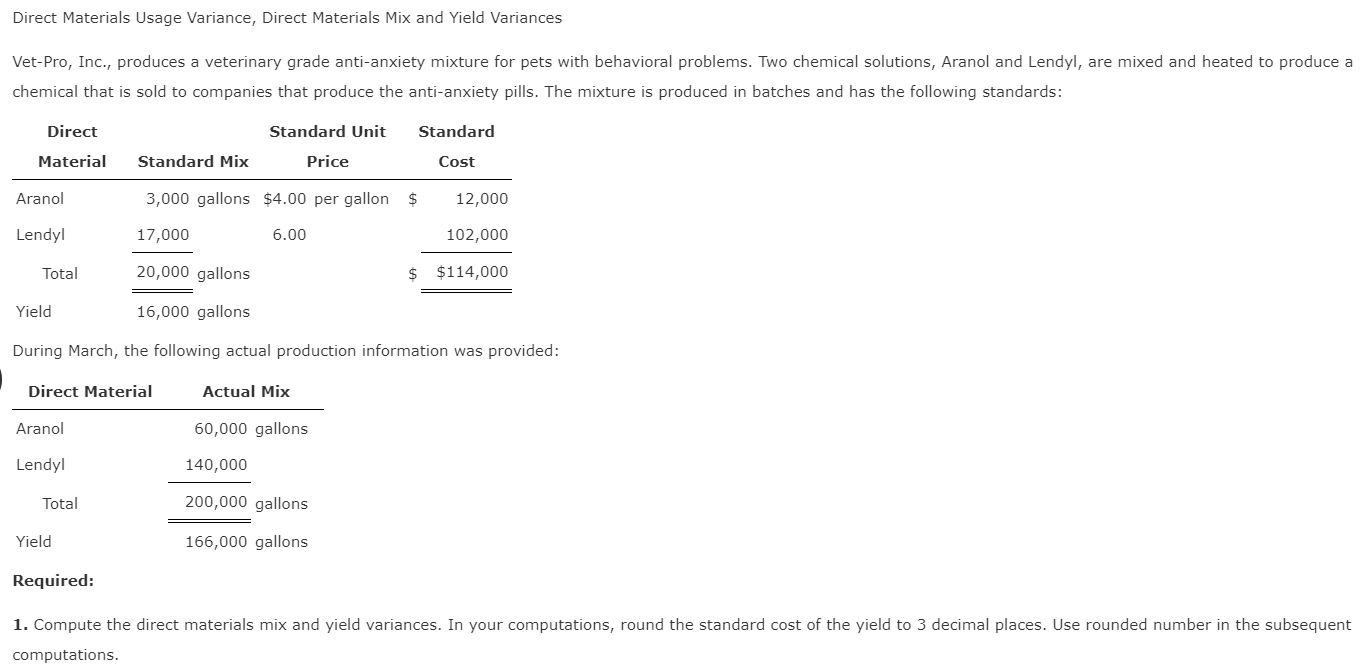
One must consider the circumstances under which the variances resulted and the materiality of amounts involved. For example, buying raw materials of superior quality (at higher than anticipated prices) may be offset by reduction in waste and spoilage. Blue Rail’s very favorable labor rate variance resulted from using inexperienced, less expensive labor. Was this the reason for the unfavorable outcomes in efficiency and volume? The challenge for a good manager is to take the variance information, examine the root causes, and take necessary corrective measures to fine tune business operations. Variance analysis should also be performed to evaluate spending and utilization for factory overhead.
FAR CPA Practice Questions: Calculating Interest Expense for Notes Payable
For example, many of the explanations shown inFigure 10.7 might also apply to the favorable materials quantityvariance. But, a closer look reveals that overhead spending was quite favorable, while overhead efficiency was not so good. An overview of these two types of labor efficiency variance is given below.
Direct Labor Variances
Advanced techniques for labor variance analysis go beyond basic calculations to provide deeper insights into labor performance. One such technique is variance decomposition, which breaks down overall labor variance into more granular components. This allows companies to pinpoint specific areas of inefficiency, such as particular departments or shifts that consistently underperform. Tools like Tableau or Power BI can be instrumental in visualizing these variances, making it easier for managers to identify patterns and take corrective actions. In February DenimWorks manufactured 200 large aprons and 100 small aprons. The standard cost of direct labor and the variances for the February 2023 output is computed next.
Types of Labor Cost Variance
Lynn was surprised tolearn that direct labor and direct materials costs were so high,particularly since actual materials used and actual direct laborhours worked were below budget. We have demonstrated how important it is for managers to beaware not only of the cost of labor, but also of the differencesbetween budgeted labor costs and actual labor costs. This awarenesshelps managers make decisions that protect the financial health oftheir companies.
- The standard direct labor rate was set at $5.60 per hour but the direct labor workers were actually paid at a rate of $5.40 per hour.
- Calculating DLYV can help organizations better control their labor costs, optimize production processes, and improve overall profitability.
- This indicates that the company spent more on labor than anticipated, prompting a review of wage policies or market conditions.
- The difference between the actual hours worked and the standard or expected hours required for the work performed, multiplied by the standard wage rate.
In this case, the actual hours worked are 0.05 per box, the standard hours are 0.10 per box, and the standard rate per hour is $8.00. This is a favorable outcome because the actual hours worked were less than the standard hours expected. If the actual rate of pay per hour is less than the standard rate of pay per hour, the variance will be a favorable variance. If, however, the actual rate of pay per hour is greater than the standard rate of pay per hour, the variance will be unfavorable. At first glance, the responsibility of any unfavorable direct labor efficiency variance lies with the production supervisors and/or foremen because they are generally the persons in charge of using direct labor force.

Fluctuations in demand, changes in labor laws, and economic downturns can all affect labor costs. For instance, during periods of high demand, companies may need to pay overtime or hire temporary workers at higher rates, leading to unfavorable labor rate variances. Conversely, economic downturns might result in layoffs or reduced hours, impacting labor efficiency. Staying attuned to market trends and economic indicators can help companies anticipate and adapt to these changes.
This variance occurs when the proportion of different labor categories used deviates from the standard mix. For example, if a project requires a higher proportion of skilled labor than initially planned, the labor mix variance will reflect this shift, potentially leading to higher costs. Learn how to manage labor variance effectively with insights on components, calculations, influencing factors, and strategies to optimize financial performance.
The difference between the actual hours worked and the standard or expected hours required for the work performed, multiplied by the standard wage rate. As with material variances, there are several ways to perform the intrinsic labor variance calculations. Or, one can perform the noted algebraic calculations for the rate and efficiency variances. The actual hours used can differ from the standard hours because of improved efficiencies in production, carelessness or inefficiencies in production, or poor estimation when creating the standard usage. The most common causes of understanding your doordash 1099 are changes in employee skills, supervision, production methods capabilities and tools. The labor variance can be used in any part of a business, as long as there is some compensation expense to be compared to a standard amount.